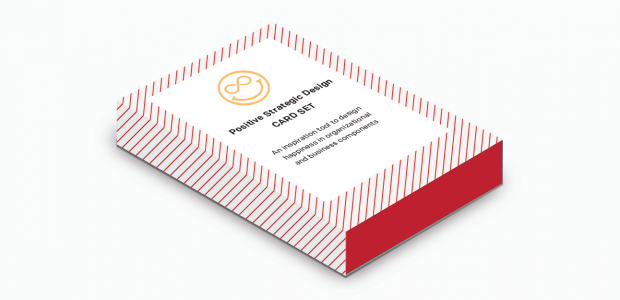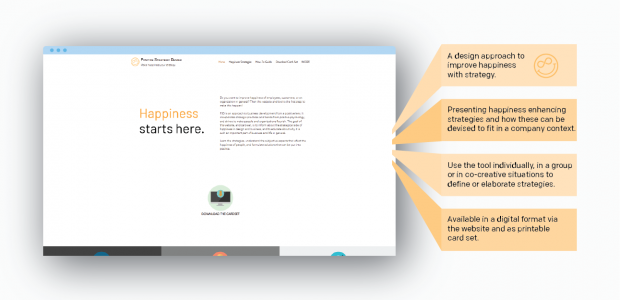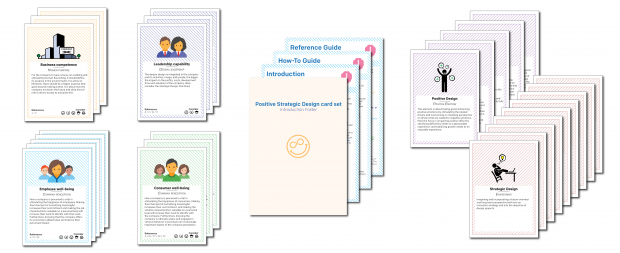By Omar van der Heijden
Opportunity
Design problems are increasing in complexity and companies are recognizing that their strategies should adapt from a business focus to a human focus. Creating a valuable user experience is a vital aspect of contemporary business approaches. It is something that, when executed successfully, can have a positive effect on users of a company’s product-service system, and with that a positive effect on the company itself. To take on these developments strategic design requires different approaches that facilitate this human focus. Positive design is such an approach which can be more commonly applied during strategic design processes. At the time of this project there was scarce incorporation of positive design solutions in product-service systems of companies.
Therefore, this design project strived to answer the research question of how positive design can be integrated into strategic design. Moreover, to gain insight (1) in the potential value positive design has to offer for both company and users and (2) which knowledge, methods and tools could assist in translating that value. The goal of this project was to formulate a tool that would inspire people to consider happiness as viable part of strategic design.
Approach
To get to the bottom of the research question, literature from the domains of strategic design and positive design was analysed and discussed. Furthermore, positive psychology was thoroughly studied. The research presented an abundance of insights and indicated that developments in both design domains and that of positive psychology offer a variety of opportunities to achieve the project’s goal. Based on these opportunities the positive strategic design (PSD) framework was formulated. As pictured in figure 1, the PSD framework consists of business competence, leadership capabilities, consumer well-being, and employee well-being. It strives to holistically overview the possible influences that affect the subjective well-being of people in the product-service system of a company.

Figure 1: Positive Strategic Design framework
Final Design
Further elaboration of the PSD framework resulted into a set of opportunities for design interventions, or happiness strategies, for each component. After an analysis of possible appropriate solutions, this resulted into the final design, which consisted of a card-set and a website.

Figure 2: The PSD card-set

Figure 3: The PSD website (www.positivestrategicdesign.com)
Besides the opportunities for happiness strategies, the solution consists of a how-to guide and principles from both strategic design and positive psychology. The card-set is meant for designers, researchers, or any person interested in happiness enhancing strategies to develop solutions that fit their organization or business. The usage of the cards is not specific, rather it is encouraged to be use during a variety of design activities. It can help to formulate strategies for a specific project, or a vision for a company’s in general. It can inspire during creative sessions or guide during ideation. Its goal is to inform and create awareness about the areas in which happiness can be affected, to ultimately come product-service solutions that benefit all stakeholders in a specific situation.
For a link to the card-set, click here!

Figure 4: The contents of the PSD card-set; 14 happiness strategies, a How-To Guide, and 14 principle cards



